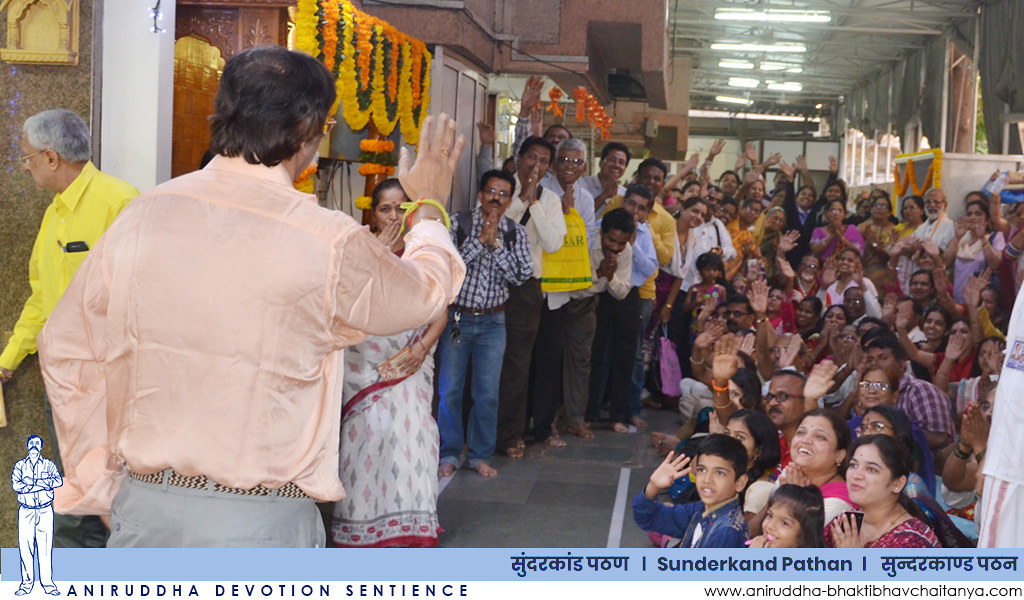Overview
Introduction to Sunderkand
Sunderkand is a significant chapter in the Hindu epic Ramayana, composed by sage Valmiki. It is an epitome of devotion and courage, showcasing the unwavering determination of Lord Hanuman. Sunderkand narrates the journey of Hanuman to Lanka in search of Sita, the wife of Lord Rama, who was abducted by the demon king Ravana. This chapter highlights the immense strength and loyalty of Hanuman, as he overcomes various obstacles and faces powerful adversaries. It is a tale of selflessness, faith, and the triumph of good over evil. Sunderkand continues to inspire millions of devotees, reminding them of the power of devotion and the importance of staying true to one’s duty.
Significance of Sunderkand
Sunderkand is a significant chapter in the epic Ramayana, and it holds immense importance in Hindu mythology. It is a compilation of the heroic deeds of Lord Hanuman, the monkey god, who played a crucial role in the rescue of Lord Rama’s wife, Sita, from the clutches of the demon king, Ravana. The word ‘Sunderkand’ translates to ‘beautiful chapter’ and aptly describes the devotion and courage displayed by Lord Hanuman throughout the narrative. Lord Hanuman’s unwavering dedication to Lord Rama and his unwavering loyalty make him an epitome of devotion and courage. His selflessness and determination serve as an inspiration to millions of devotees who seek his blessings and guidance in their lives. The significance of Sunderkand lies in its ability to instill faith, strengthen devotion, and remind individuals of the power of unwavering belief in the face of adversity.
Summary of Sunderkand
Sunderkand is a chapter from the epic Ramayana that showcases the unwavering devotion and immense courage of Lord Hanuman. It is considered to be one of the most significant parts of the Ramayana. Sunderkand narrates the journey of Hanuman to Lanka in search of Sita, the wife of Lord Rama, who had been abducted by the demon king Ravana. Hanuman’s determination and loyalty to Lord Rama are evident throughout the chapter, as he overcomes various obstacles and faces numerous challenges. The chapter highlights the power of faith and the triumph of good over evil. It serves as an inspiration for millions, reminding them of the importance of devotion and courage in the face of adversity.
Historical Context

Origin of Sunderkand
The origin of Sunderkand can be traced back to ancient times. It is believed to have originated in the state of Odisha, India. Sunderkand is a chapter from the epic Ramayana, written by sage Valmiki. This chapter narrates the journey of Lord Hanuman to Lanka in search of Goddess Sita, who had been abducted by the demon king Ravana. Sunderkand is considered to be an epitome of devotion and courage, as Lord Hanuman overcomes various obstacles and displays his unwavering devotion to Lord Rama. It serves as an inspiration to millions of devotees around the world.
Historical events during the time of Sunderkand
Sunderkand is a chapter from the Indian epic Ramayana, which narrates the heroic journey of Lord Hanuman to Lanka in search of Sita, the wife of Lord Rama. During the time of Sunderkand, several historical events took place that shaped the course of the epic. One of the significant events was the construction of the Setu Bridge, also known as the Ram Setu, by Lord Rama and his army of Vanaras. This bridge played a crucial role in connecting the mainland of India to Lanka, allowing Lord Hanuman to cross over and carry out his mission. Another important event was the encounter between Lord Hanuman and the demon king Ravana. This confrontation showcased the immense strength and courage of Lord Hanuman as he fearlessly faced Ravana and his army. These historical events during the time of Sunderkand highlight the devotion and courage exhibited by the characters in the epic.
Impact of Sunderkand on Indian culture
Sunderkand, a chapter from the ancient Indian epic Ramayana, has had a profound impact on Indian culture. It is recited and revered by millions of devotees across the country. The recitation of Sunderkand is believed to bring peace, prosperity, and spiritual upliftment. The practice of reciting Sunderkand has become an integral part of religious ceremonies and festivals in India. The impact of Sunderkand can be seen in the increased devotion and faith among the people. It has also played a significant role in promoting unity and harmony among different communities. The recitation of Sunderkand takes approximately 45 minutes, and during this time, devotees immerse themselves in the divine verses and seek blessings from Lord Hanuman. The power of Sunderkand lies in its ability to instill courage, determination, and devotion in the hearts of its followers. It continues to be a source of inspiration for millions, reminding them of the importance of faith and spirituality in their lives.
Themes

Devotion to Lord Hanuman
Devotion to Lord Hanuman is the cornerstone of the Sunderkand, an epic chapter in the Ramayana. Hanuman, the monkey god, is revered for his unwavering faith and loyalty towards Lord Rama. In the Sunderkand, Hanuman’s devotion is showcased through his relentless search for Sita, the wife of Lord Rama, who was abducted by the demon king Ravana. Hanuman’s courage and determination in facing numerous challenges and overcoming obstacles make him an embodiment of devotion. His selfless acts and unwavering dedication to Lord Rama inspire millions of devotees to this day. The Sunderkand serves as a reminder of the power of devotion and the triumph of good over evil.
Courage and determination
Courage and determination are the key attributes that define the essence of Sunderkand. This sacred chapter of the epic Ramayana showcases the unwavering resolve of Lord Hanuman as he embarks on a perilous journey to find Sita, the wife of Lord Rama, who has been abducted by the demon king Ravana. Throughout the narrative, Hanuman overcomes numerous obstacles and displays immense bravery in the face of adversity. His unwavering faith in Lord Rama and his undying devotion to the cause of righteousness serve as an inspiration to all. The passages that highlight Hanuman’s courage and determination can be formatted bold to emphasize their significance.
Triumph of good over evil
The Triumph of good over evil is a recurring theme in many mythological stories and religious texts. It represents the ultimate victory of righteousness and virtue over wickedness and darkness. Sunderkand, a chapter from the epic Ramayana, is a perfect example of this triumph. Sunderkand narrates the heroic journey of Lord Hanuman to Lanka in search of Goddess Sita, who had been abducted by the demon king Ravana. With unwavering devotion and immense courage, Hanuman overcomes numerous obstacles and ultimately succeeds in finding Sita and delivering Lord Rama’s message of love and support. This act of bravery and selflessness not only showcases the triumph of good over evil, but also serves as an inspiration for individuals to always stand up for what is right and just.
Narrative Structure
Introduction to the characters
The characters in Sunderkand play a crucial role in the epic. Each character brings a unique perspective and contributes to the overall narrative. Lord Hanuman, the central character, is known for his unwavering devotion and immense strength. His courage and determination are evident as he embarks on a mission to find Sita, the wife of Lord Rama, who has been abducted by the demon king Ravana. Hanuman’s loyalty and selflessness are showcased throughout the story, making him an epitome of devotion and courage. Another important character is Lord Rama, the seventh avatar of Lord Vishnu. He is depicted as a righteous and just ruler, who is willing to go to any lengths to rescue his beloved wife. Rama’s unwavering faith in Hanuman and his unwavering commitment to dharma inspire and guide the other characters in their journey. Sita, the epitome of purity and grace, is portrayed as a strong and resilient woman who remains steadfast in her devotion to Rama, even in the face of adversity. Her unwavering faith in Rama’s ability to rescue her showcases her courage and unwavering love. These characters, along with others like Lakshmana, Vibhishana, and Ravana, form the intricate web of relationships and emotions that make Sunderkand a timeless tale of devotion and courage.
Plot progression
The plot progression of the Sunderkand revolves around the heroic deeds of Hanuman. Hanuman, the mighty monkey god, embarks on a journey to find Sita, the wife of Lord Rama, who has been abducted by the demon king Ravana. With unwavering devotion and unparalleled courage, Hanuman overcomes numerous obstacles and challenges in his quest. He encounters various mythical creatures, faces powerful adversaries, and even crosses an ocean to reach his destination. Throughout his journey, Hanuman displays his extraordinary strength, intelligence, and loyalty. His determination and selflessness serve as an inspiration to all devotees of Lord Rama. Hanuman’s unwavering devotion and fearless actions make him a symbol of courage and devotion in the Sunderkand.
Climax and resolution
The climax of Sunderkand is marked by the heroic actions of Lord Hanuman. After successfully locating Sita in Lanka, Hanuman confronts the demon king Ravana and engages in a fierce battle. With his immense strength and courage, Hanuman defeats Ravana’s army and emerges victorious. This pivotal moment in the epic showcases Hanuman’s unwavering devotion and his determination to fulfill Lord Rama’s mission. The resolution of Sunderkand comes when Hanuman returns to Lord Rama with the news of Sita’s whereabouts. This leads to the ultimate reunion of Lord Rama and Sita, bringing an end to their separation and restoring harmony and happiness. Sunderkand is a powerful testament to the power of devotion and the triumph of good over evil.
Symbolism and Allegory
Hanuman as a symbol of devotion
Hanuman is widely regarded as a symbol of devotion in Hindu mythology. His unwavering dedication to Lord Rama is a testament to his immense faith and loyalty. Hanuman’s actions and sacrifices throughout the epic Ramayana showcase his unwavering devotion to his beloved Lord. His selflessness and courage in the face of adversity serve as an inspiration to millions of devotees around the world. Hanuman’s character embodies the essence of true devotion, reminding us of the power of faith and the importance of surrendering oneself completely to a higher power.
The journey as a metaphor for life
The journey of the Sundara Kanda is often seen as a metaphor for life. Just like the characters in the epic Ramayana face various challenges and obstacles during their journey, individuals in real life also encounter ups and downs, joys and sorrows. The Sundara Kanda teaches us the importance of perseverance, courage, and unwavering devotion in the face of adversity. It reminds us that no matter how difficult the path may seem, with faith and determination, we can overcome any obstacle and emerge victorious. The story of the Sundara Kanda serves as a source of inspiration and motivation for people to stay strong and committed to their goals, no matter the circumstances.
Ravana as a representation of evil
Ravana, the antagonist in the epic Ramayana, is often portrayed as a representation of evil. His character embodies arrogance, greed, and a complete disregard for righteousness. Despite his immense power and intelligence, Ravana’s downfall is ultimately brought about by his own hubris. Lord Hanuman, the epitome of devotion and courage, plays a pivotal role in Ravana’s defeat. It is through Hanuman’s unwavering loyalty to Lord Rama and his relentless pursuit of righteousness that Ravana is ultimately vanquished. Hanuman’s selflessness and dedication serve as a stark contrast to Ravana’s selfishness and wickedness, highlighting the triumph of good over evil.
Impact and Legacy

Influence on literature and art
The Sunderkand, a chapter from the Indian epic Ramayana, holds a significant influence on literature and art. Its enchanting narrative and profound spiritual teachings have inspired countless writers, poets, and artists throughout history. The vivid descriptions of Lord Hanuman‘s journey to Lanka in search of Sita, the goddess of beauty and virtue, have captivated readers and viewers alike. The bravery and devotion displayed by Hanuman in overcoming various obstacles and defeating the demon king Ravana serve as a timeless example of courage and determination. The Sunderkand continues to be celebrated and revered, not only for its religious significance but also for its artistic and literary value.
Devotional practices and rituals
Devotional practices and rituals play a significant role in the worship of Lord Hanuman, as depicted in the epic of Sunderkand. Sunderkand is a chapter from the Indian epic Ramayana, which narrates the journey of Lord Hanuman to find and deliver a message to Lord Rama’s wife, Sita. It is considered a sacred text and is recited by devotees as a form of prayer. The recitation of Sunderkand is believed to bring blessings, protection, and spiritual upliftment to the devotees. It is often performed in temples and homes, accompanied by various rituals such as lighting incense, offering flowers, and chanting mantras. The devotion and courage displayed by Lord Hanuman in Sunderkand serve as an inspiration for devotees to deepen their faith and commitment to their spiritual practices.
Continued relevance in modern times
Sunderkand, a chapter from the Hindu epic Ramayana, continues to hold immense relevance in modern times. The timeless tale of Lord Hanuman’s devotion and courage resonates with people of all ages and backgrounds. Interpreting Sunderkand provides valuable insights into the power of unwavering faith and the ability to overcome obstacles. This ancient scripture serves as a guiding light, reminding individuals to stay steadfast in their beliefs and face challenges with determination. The profound teachings of Sunderkand have been passed down through generations, inspiring countless individuals to embark on their own spiritual journeys. Through its vivid portrayal of Lord Hanuman’s unwavering dedication to Lord Rama, Sunderkand serves as a beacon of hope and inspiration in today’s fast-paced and tumultuous world.
Author Profile

Latest entries
- 28 June 2025BlogHow to Choose the Best High-Yield Savings Account with 5%+ Interest in India (2025 Guide)
- 28 December 2024BlogTop 6 Employee Management Software for Small Businesses
- 19 December 2024BlogShri Hanuman Chalisa in Hindi Text with English Translation
- 7 August 2024BlogTop 13 Online Master of Social Work Programs

